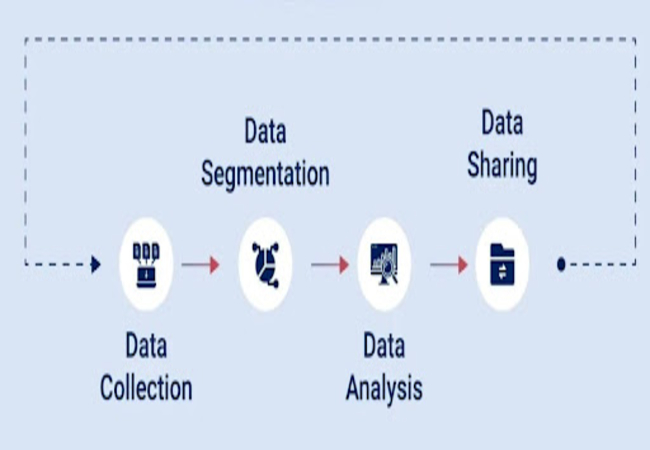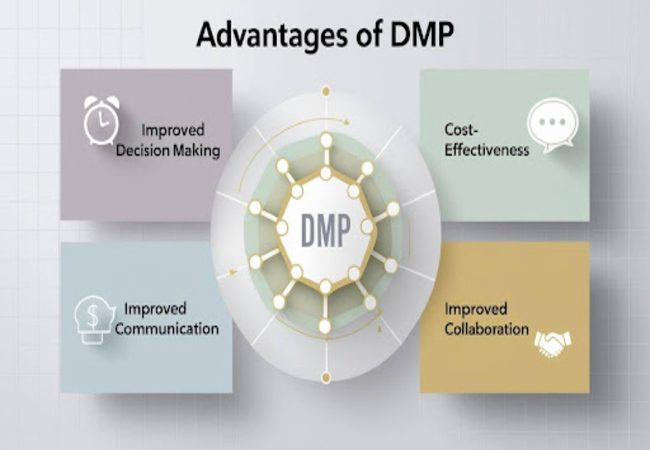DMP Full Form in Advertising Its Role and Importance

Data management platforms have transformed into an essential tool for organizations looking to leverage their digital marketing capabilities in today’s competitive playground. This innovative concept includes the following:
- Data collection: Collecting data from various sources.
- Data integration: Merging different kinds of data to analyze.
- Data analysis: Deriving insights into targeted campaigns.
Due to an increasing demand for customised marketing strategies, DMP would significantly impact the marketing output of the organization and its interaction with customers.
What DMP Can Do

- Better Decision Making:
DMP provides precious insights into what makes marketing more feasible. That way, marketers will be able to support any informed decision they make. - Cost Effectiveness:
It allows an organization to manage resources efficiently by identifying areas that can bring about savings and minimize unnecessary spending on any marketing budget.
DMP supports the marketing activities to be aligned with customers’ preferences and behaviors, implying an insistence on doing things in a manner that gives the most returns. - Continuous Improvement:
The platform ensures continuous review and approach change to campaigns to ensure campaign relevance and effectiveness. - Strategic Planning:
DMP facilitates better forecasting and long-term decision-making such that marketers can provide a good answer to what is going to happen eventually and design accordingly.
In this blog, we’ll learn about the principles of DMP, the significance of data management platforms in contemporary business practices, and how organizations can tap into it for enhanced marketing effectiveness. Let’s join you in this revelation and discover all the insights and actionable steps to implement DMP into your marketing campaign.
What is a DMP (Data Management Platform)?

DMP, or Data Management Platform, is that technology and software platform which gathers data from disparate sources, manages it, and then analyzes them. Organizations can identify and organize the user’s data to benefit them through these engagements:
- Develop Targeted Advertising Strategies:
Benefit with greater user engagement through insights. - Enhance Marketing Effectiveness:
Use more personalized and result-oriented campaigns.
A DMP empowers marketers to connect with the insights of consumer behavior for more personalized and effective advertising campaigns.
Key Elements of DMP
- Data Collection:
The main aspect of a DMP is data aggregation on first-party, second-party, and third-party data. The rest of the analysis and targeting are based on this foundational element. - Data Segmentation:
Data segmentation refers to the process of classifying collected data according to defined characteristics, behaviors, and demographics to pinpoint specific audience groups.
Data segmentation enhances the overall efficiency of marketing campaigns. - Data Integration:
Data integration is the process of combining data from various disparate platforms and channels to ensure all available data is at one place. This ability has made the implementation of DMP more robust and has also simplified marketing processes while also ensuring campaigns are uniform.
Advantages of DMP

- Improved Decision Making:
DMP may assist in improved decision making since it offers a completely comprehensive view of consumer behavior and preference.
For example, a fashion retailer can adjust its inventory and marketing campaigns that are connected with the purchasing patterns of its customers if it deems after analysis through help of their DMP, that they require such adjustments. - Cost-Effectiveness:
Use of DMP helps in cost efficiency as it enables organizations to derive better returns on advertising spend.
By targeting effectively narrow audiences, businesses can reduce waste ad spend on unlikely to convert the audience. - Improved Communication and Collaboration:
DMP encourages better communication and collaboration with marketing teams.
Access to central data allows teamwork to effectively focus on ensuring each campaign is aligned as well as data-driven.
Principles of DMP
- Activity Focus:
A DMP also should have a clear understanding of what the objective of customer interaction is and what actually drives that activity.
Marketers can adjust their efforts to where they can most maximize interaction by analyzing interactions at every step of the customer journey. - Link Activities to Costs:
Providing a clear relationship between marketing activities and associated costs allows organizations to improve resource allocations.
This way, truly impactful strategies get all the budget they need. - Ongoing Improvement:
The market strategy demands a great extent of constant monitoring and evaluation that, over time, can improve.
DMP always promotes the culture of continuous improvement and is enabled by the realization of data insights into agile marketing tactics.
How to Implement DMP

- Study Current Activities:
The companies have to understand what the marketing and data processes are through an assessment.
Having them functionably integrated, knowledge of current sources of data and interactions by the consumers is always important. - Determine Cost Drivers:
Determining the factors affecting the cost of advertisements helps the business in properly allocating its budget.
Account for engagement levels and channel performance. - Roll Out Performance Metrics:
Setting up as well as monitoring performance metrics helps in benchmarking campaigns’ effectiveness.
Conversion rates, customer acquisition cost, and return on ad spend are KPIs that clearly point out the campaign performance. - Involve Employees:
Involving employees of different departments in the DMP rollout process goes a long way in generating buy-ins and subsequently leading to better strategic alignment.
Training and collaboration are bound to ensure that all the members in the organization learn the value of insights from data. - Technology is Leverage:
State-of-the-art technology and a variety of tools can add huge value to the usage of a DMP.
There exist various platforms that can integrate, analyze, and segment data, thus speeding up the process.
Real-life Examples of DMP
Example 1: The Home Depot

Utilized a DMP in assessing customer behavior both online and at the stores. With their emphasis on data-driven targeted advertising, demographically based on user data and purchasing behaviors, they were able to increase their return on investment by 20%.
Example 2: Procter & Gamble

Embraced DMP to enhance its digital marketing. Data aggregation and analysis of consumer engagement enabled it to calibrate such campaigns that yielded higher retention rates among its customers.
Example 3: Audi

Took a DMP to understand its customers’ journey better. Using the insights they learned, they adjusted their ad strategies. They saw a substantial increase in test drive bookings and sales.
Conclusion: The Role of DMPs for Advertisement
In conclusion, understanding DMP is an approach that is very valuable for organizations that want to improve their advertising strategy and customer interaction. Through gaining a deep understanding of data integration, audience segmentation, and analytics, the company can learn to:
- Relevant Resource Utilization:
Channel resources towards ROI-generating activities. - Marketing Tune:
Fine-tune campaigns in line with information provided by the data and reports. - Continuous Improvement:
Periodically review and update the marketing strategy.
This will free tremendous potential in the workings of business operation processes and their decision-making approach. The more the business would experience market pressure and competition, the more imperative DMP investment would prove to be as a base of successful managerial practices.
- Improved Targeting:
Target the right audience with the right precision to enhance the conversion rates and ROI on campaigns. - Data-Driven Insights:
Make good marketing decisions through robust analytics and the customer behavior data that gives even more impactful campaigns. - Streamlined Resource Allocation:
Optimize the marketing budget with a clear understanding of which strategies work best, helping to identify where to focus efforts to achieve maximum results.
This is the perfect time to embrace Data Management Platforms and experience what it can do for your company. Take the first step today toward optimized advertising strategies and more engagement with customers.
Final Thoughts
In simple words, there is a necessity to understand the distinct forms of magazine adverts for a business to be able to utilize the print media to its ultimate potential. Once the appropriate advert type has been selected, then the marketing objectives will be achieved, their advantage will stand out in a highly competitive marketplace and growth will be ensured.
